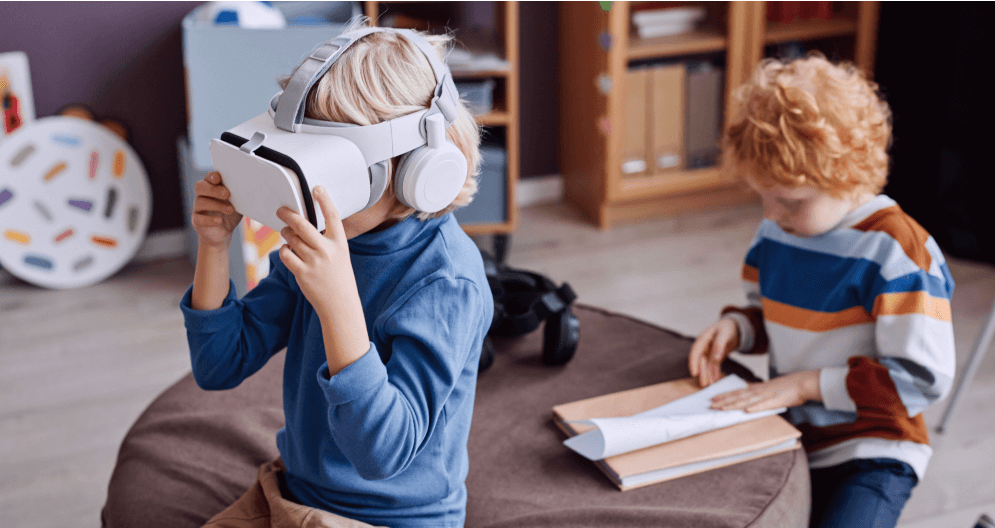What is 3D in education?
3D in education refers to the thoughtful integration of 3D collaboration technologies into school curricula and classrooms to enhance learning. This includes tools like 3D printing, 3D modeling software, augmented reality, virtual reality, and 3D simulation tools adopted by teachers and educators at large.
The goal is to provide more interactive, tactile learning experiences that are intended to boost student engagement, comprehension, and skill development. With 3D, students can transition from passive listeners to active creators and explorers.
Key examples include allowing a student to create and 3D print models to deepen understanding, take immersive VR field trips to otherwise inaccessible locations, develop 3D design skills through modeling, and leverage AR/VR to evaluate prototypes or building designs.
3D enables more hands-on, experiential learning anchored in real-world problem-solving. 3D in education transforms static lessons into dynamic springboards of creativity and critical thinking when integrated purposefully.
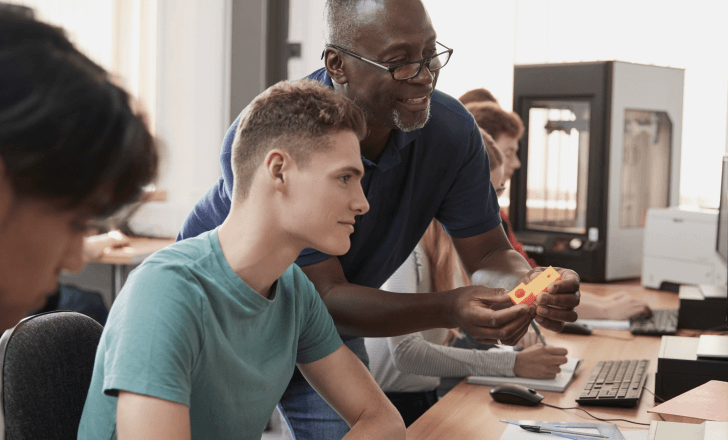
Engaging young students with 3D technologies
Bringing ideas to life with 3D printing
3D technologies are making their way even into elementary school classrooms. 3D printing gives young students a tactile way to bring their ideas to life. Turning a 2D drawing into a 3D printed model connects the learning process in a tangible way that spurs creativity.
Teachers are utilizing these printers to allow students to prototype everything from art to science fair experiments. This ability to quickly create and iterate on ideas boosts engagement and makes learning more hands-on.
Students also learn critical thinking skills when designing 3D prints. They must consider how their ideas will translate into a physical object. This helps develop spatial reasoning abilities. 3D printing empowers students to become creators rather than just consumers of technology.
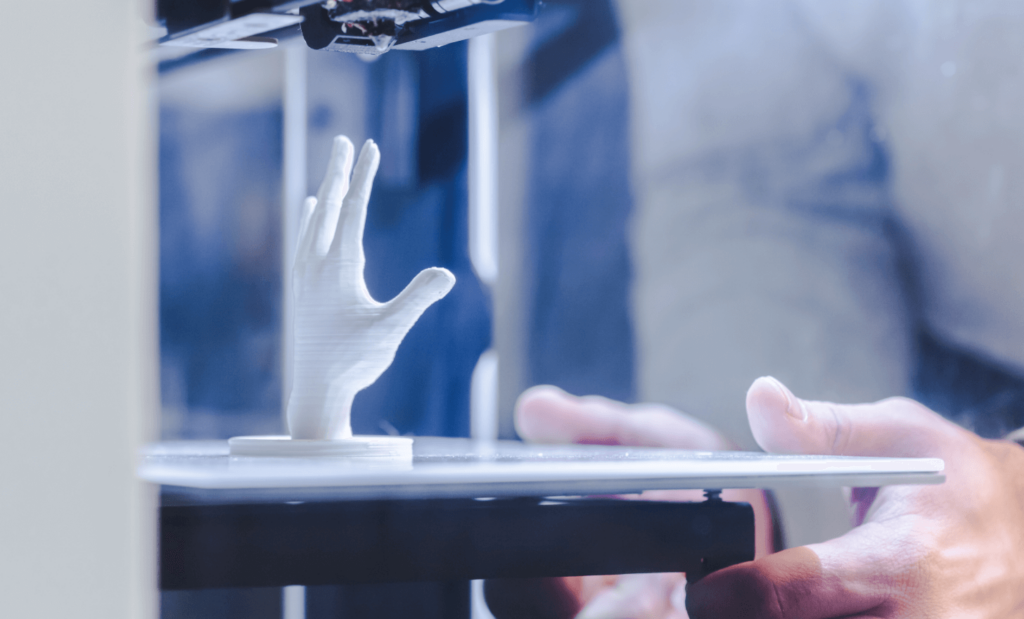
Immersive education with 3D models, AR, and VR
Educators are increasingly using 3D simulations, interactive 3D models, augmented reality, and virtual reality devices in the classroom to immerse primary and secondary school students in learning. These technologies are transforming traditional textbook lessons and assignments into multi-sensory experiences that spark engagement and curiosity.
For example, an augmented reality learning experience could virtually transport students to recreate ancient world sites, buildings, and artifacts right in the classroom.
In a history lesson, students may use AR apps on tablets in the classroom to analyze and interact with virtual models of Parthenon ruins or Egyptian pyramids. Or students may don VR headsets to be immersed in important historical moments like the moon landing or civil rights marches.
VR field trips also allow students to visit locations relevant to their class lessons that would otherwise be inaccessible, like the Galapagos Islands, inside the human body, or even outer space. These immersive technologies make difficult concepts much more accessible by letting students actively explore them.
3D simulations are used in science classes to interact with molecules, weather systems, physics experiments, and more in a risk-free virtual setting. Students can manipulate variables and grasp abstract concepts through hands-on simulations.
By transitioning from static textbooks to dynamic 3D models, simulations, and visualizations, educators tap into how today’s digitally native learners engage best with content. They inspire students’ curiosity and make classes highly memorable.
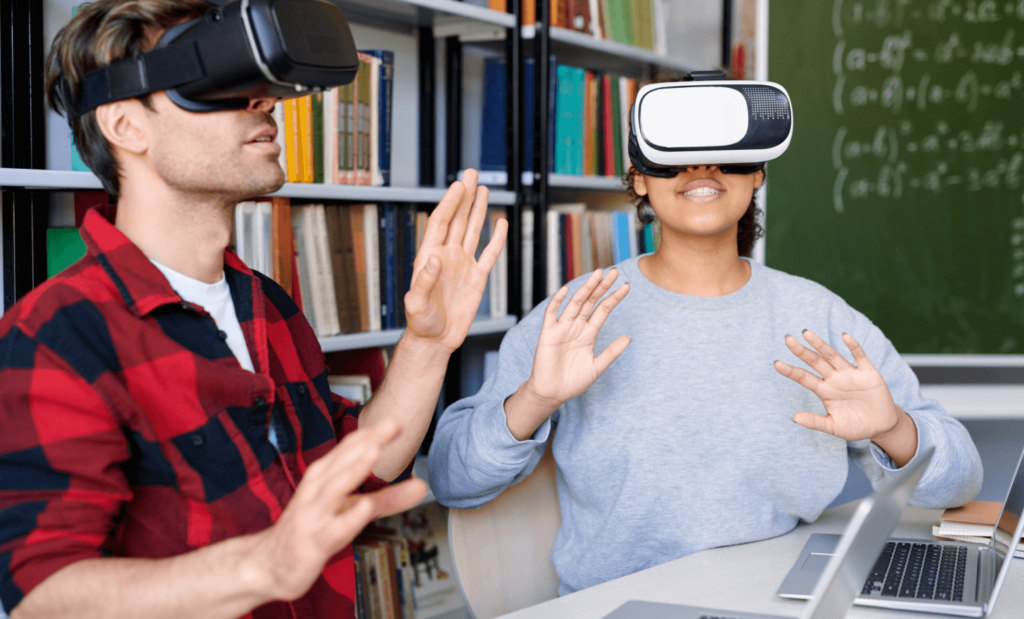
Developing 3D skills in secondary school
Fostering STEM and design skills with 3D modeling
As students progress into middle and high school, 3D design and modeling software provide opportunities for hands-on learning across subjects from math to art.
Having them create their own 3Ds develops critical thinking, design skills, and an interest in STEM topics. This learning-by-creating approach is ideal for experiential learning. It also engages artistic students who can see their creativity come to life in 3D.
When students have ownership over making their own 3D models and compositions, they become more invested in learning. 3D software turns them into creators of technology rather than just users.
This sense of empowerment can boost confidence and help young people see future career pathways they may want to explore.
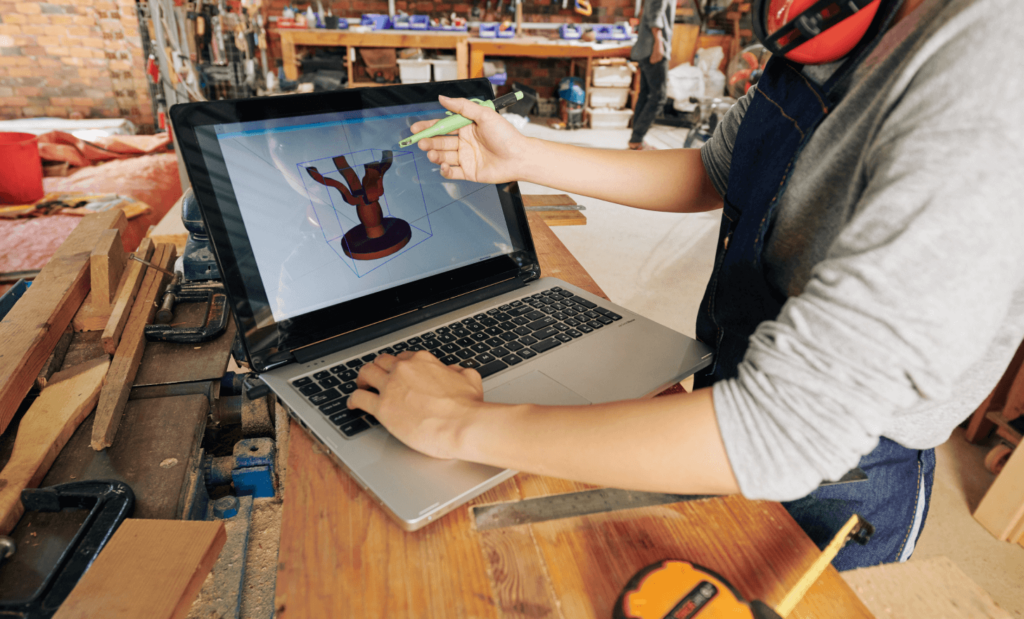
Glimpsing professional workflows with 3D
More advanced 3D design and modeling curricula provide secondary school students valuable glimpses into real-world career skills and workflows.
Industrial design and urban planning projects allow people to gain professional-level 3D skills while working in teams. This develops crucial abilities and informs their career interests and college paths in design and engineering.
Educators are partnering with local manufacturing companies and higher education programs to provide authentic design challenges for student teams. An engineering college may task teens with designing a sustainable tiny home using 3D modeling software and prototyping key elements with 3D printing.

Participants learn to brainstorm ideas, form together, divide roles, manage deadlines, give and apply feedback, and present finished products.
These real-world collaborative 3D experiences are invaluable for exposing students to career pathways while building teamwork, problem-solving, and communication skills essential in today’s business environments.
Students also learn how to use industry-standard 3D design software they will encounter in higher education and at workplaces. The ability to work effectively and creatively in teams provides lasting advantage as they progress academically and professionally.
There are limitless possibilities for equipping kids with professional-level abilities using 3D technologies.
The key is connecting students with real-world teamwork that empowers them to develop skills and passions while promising exciting career opportunities.
Advanced collaboration with 3D in higher education
Preparing for real-world work experiences
At the higher education level, 3D technologies teach essential real-world collaboration abilities.
Architecture, engineering, and industrial design students must work together on complex projects and incorporate feedback from instructors and clients. A centralized 3D design platform for education makes this process far more efficient.
With a platform like RealityMAX, students and educators can collaborate on a 3D project from anywhere. Team members can work on the same model, make edits, leave comments, and review changes in real-time.
This 3D design collaboration capability is invaluable, of course, especially with so many institutions utilizing remote learning.

Immersive project review with AR/VR
The ability to collaboratively review designs and prototypes provides huge benefits for architecture, engineering, and product design education.
Students and teachers can identify design flaws and opportunities more readily this way.
Engineering and product design students can leverage AR or VR to view and manipulate concepts created in digital 3D space. This facilitates rapid design iteration based on testing and feedback before investing in physical prototypes.
Students save significant time and resources by streamlining the process of assessing, modifying, and perfecting designs in an immersive collaborative environment. They gain workplace-ready skills in design thinking, digital collaboration, documentation, delivering constructive feedback, and presenting ideas.
A platform like RealityMAX enables this advanced functionality by making it easy to build 3D scenes and turn them into sharable 3D and AR environments, work on 3Ds together, and collect actionable feedback more easily.
Built-in collaboration tools allow remote teams to do research and review designs together in real time. The future-forward capabilities RealityMAX unlocks accelerate research and enhance project-based learning.
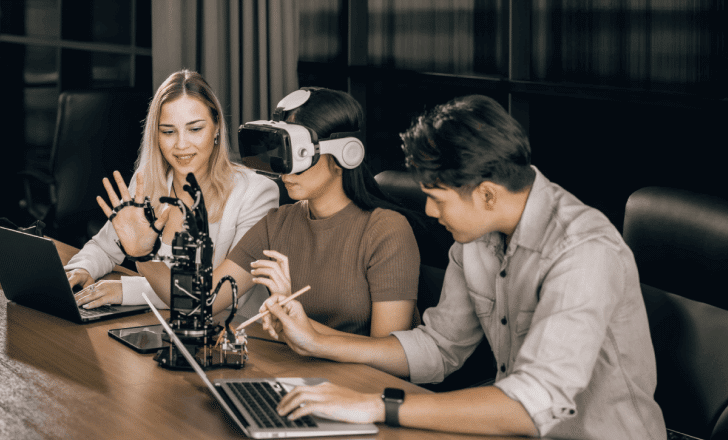
Streamlined and accessible workflow
Having streamlined, easy-to-use workflows for 3D design and collaboration greatly benefits students and educators in the field of design and engineering.
Simplified teaching tools allow learners to focus on honing their craft and creativity rather than getting bogged down learning complex software programs.
Intuitive 3D platforms with short learning curves empower students across disciplines to quickly bring their designs and projects to life.
When workflows are developed and optimized for education, students can readily access class materials and collaborate smoothly from any device or location. This flexibility is invaluable in today’s remote and hybrid learning environments.
Educators also benefit from simplified administrative interfaces to manage remote collaboration, request and provide feedback, and monitor student progress on 3D. Streamlined tools democratize access to powerful 3D capabilities for teachers and students alike.
Platforms like RealityMAX enable these streamlined, accessible workflows by integrating complex functionalities into intuitive user interfaces.
Students spend less time figuring out software and more time learning through 3D creation. RealityMAX allows educators to tap into the engagement and learning benefits of 3D without significant technical barriers.
Forget about heavy downloads or complex software installs because an online 3D visualization and manipulation tool like RealityMAX is cloud-based. This also means it’s OS-neutral and runs in your browser on Windows or Mac systems.
The benefits of integrating 3D technology in education
Enhanced learning processes
3D technologies for education enhance the learning process at all education levels in impactful ways. It provides more immersive, tactile methods for absorbing classroom material for younger students. Older students gain valuable hands-on skills in 3D design and modeling.
3D tools turn students from passive learners into active creators. Designing their own 3D projects heightens engagement across subjects from science to math. Students learn better by applying classroom concepts to bring their ideas to life.

Preparation for future careers
By exposing students to real-world design practices and industry-standard software, 3D technology grooms the workforce of the future generation. Students will enter colleges and careers with relevant skills already mastered. This can help schools support the needs of local companies and industries.
Tools like RealityMAX streamline the entire 3D workflow from conceptualization to finished project. For students pursuing fields involving 3D design like architecture, simulation features aid with evaluating real-world feasibility. The ability to collaborate remotely prepares students for modern professional environments as well.
More engaging and effective classrooms
As education continues trending toward more experiential, student-driven approaches, 3D technology has an integral role to play. From elementary classrooms to higher education design labs, it enables more engaging, accessible learning.
Educators can utilize 3D printing, modeling, VR/AR, and advanced simulation tools to make courses that truly unlock students’ interests and creativity. The learning and teaching process benefits tremendously as a result.
Students who learn by actively doing and creating retain more information. Blending 3D technology into the curriculum makes classrooms places of innovation that students look forward to rather than dread. This reignites their natural desire to learn and imagine.
Improved spatial reasoning and creativity
Working on 3D design helps students build up critical spatial reasoning and visual cognition skills.
The ability to visualize and manipulate objects improves comprehension across STEM subjects. 3D also provides more opportunities to unlock student creativity across artistic disciplines.
Increased accessibility and inclusion
3D tools provide new avenues for making learning accessible to students with disabilities.
Those with visual impairments can benefit from tactile 3D models. Immersive technologies like VR also show promise for making classrooms more inclusive.

Mitigated resource constraints
Schools with limited resources can utilize 3D technologies to expand access to tools, materials, and spaces.
Students can visit virtual environments and build 3D models of things previously constrained by budgets. 3D expands educational possibilities.
Conclusion
3D in education is transforming teaching by providing more interactive, hands-on learning experiences.
As 3D technologies continue advancing, these tools are poised to become integral to classrooms and curricula. The future looks bright for more immersive, digitally enhanced education at all levels.
Students and teachers can build that future together. With a little help from RealityMAX.
Are you an educator or a student? We have a dedicated RealityMAX classroom program aimed at supporting 3D learning experiences at all levels. If you’re interested in advanced 3D collaboration features packages – also free ones – for your school or classrooms, do not hesitate to get in touch!
